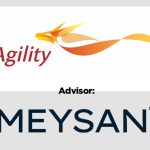Recent years have seen the introduction of sweeping legislation aimed at increasing oversight of mining ventures, leading in turn to a wave of new compliance considerations. In this interview with Darryl Levitt, we discuss the regulatory space in the mining industry and how counsel can expect to see it evolve throughout this coming decade.
What are the crucial mining sector disclosure standards and requirements in Canada?
Currently, mining in Canada is subject to significant regulatory disclosure requirements. To begin with, there are minimum standards for disclosure of technical information incorporating the Canadian Institute of Mining, Metallurgy, and Petroleum (CIM) standards. National Instrument 43-101 sets out minimum standards for disclosure of technical information. The Companion Policy and CIM Best Practice Guidelines should also be followed where possible. The qualified person (QP) preparing the technical disclosure, based on his/her relevant experience and professional judgement is responsible for choosing the assumptions, methods, and practices used to verify, interpret, estimate and report technical information. Given that exploration and mining companies will require access to large amounts of capital over a lengthy period, there is a need for regulators to control and deal with potentially misleading information in order to protect investors.
Further, under Canadian securities regulations, public companies must disclose information material to investor decision-making. This would include material environmental matters associated with activities affecting climate change. Based on the latest federal budget, Canada’s financial regulator OSFI will require federally regulated financial institutions such as banks, insurance companies and federally incorporated or registered trust and loan companies to publish climate disclosures aligned with the Taskforce on the Climate-Related Financial Disclosure (TCFD) framework commencing in 2024 and employing a “phased-in” approach. While the rules do not yet apply to non-financial institutions, OSFI will expect the financial institutions to collect and evaluate information on climate risks and emissions from their clients (including mining and oil gas clients). The government has stated that it is committed to moving towards mandatory TCFD reporting “across a broad spectrum of the Canadian economy” and that it also expects to require ESG disclosures from federally regulated pension plans.
Do the requirements in North America differ greatly from those seen overseas?
In jurisdictions with extensive mining activities such as Australia, Canada and South Africa, mandatory technical disclosure requirements, whilst not identical, are mostly similar in substance with similar objectives. Other aspects of disclosure, such as best practices on climate-related and ESG disclosure, have their unique differences.
Under Canadian securities regulations, public companies must disclose information material to investor decision-making.
For example, on 21 March 2022, the Securities and Exchange Commission (SEC) introduced proposed rules for climate change disclosure requirements for both US public companies and foreign private issuers. In March 2022, the SEC proposed mandated corporate reporting on climate change by public companies. These disclosure requirements are mostly prescriptive rather than best practices and are largely based upon the TCFD reporting framework and the Greenhouse Gas Protocol.
SEC filers would be required to disclose their Scope 1 and Scope 2 greenhouse gas emissions, which are those emissions that “result directly or indirectly from facilities owned or activities controlled by a registrant.” The proposals would compel issuers listed on an American stock exchange to report the entire extent of their CO2 emissions, in contrast to recent Canadian proposals by the Canadian Securities Administrators (CSA) that would permit companies to opt out of full greenhouse gas disclosure. The proposed SEC rules are expected to be finalised later this year.
The United Kingdom and New Zealand are also now proposing mandatory climate-related disclosures.
In what ways have “best practices” for mining disclosures chnged during your career in the sector?
There is a global trend to harmonise best practices in areas that affect common interest issues around the world. The relevant areas would be relating to disclosures around ESG, climate change, sustainable and responsible mining processes, inclusivity and diversity of management, transparency of ownership and transparency of indigenous consultation. Although some disclosure requirements are only best practices and voluntary in many respects, we are seeing a drive to transform these best practices into mandatory disclosure requirements in many jurisdictions. The growing awareness of factors considered by some to influence climate change has resulted in a concerted effort by lobbyists, various industry participants and NGOs to transform best practices into mandatory compliance with calls for enhanced levels of disclosures.
What are the typical compliance issues that you observe regarding disclosures?
By far the most common compliance issues we have observed are deficiencies in technical report content relating to estimates of mineral resource, the disclosure of estimates and a lack of compliance with Part 3 of NI 43-101 – such as omissions by the QP to describe the proposed mining methods – and failure by the QP to specify the means of verifying data.
Certain other routine disclosure in websites, AIFs, news releases and other public disclosure has often failed to state both the tonnage and grades of mineral resources or mineral reserves, whether the mineral reserves were included or excluded from the mineral resource estimates or included in general risk disclosure that was not specific to the company’s mineral project.
There is a global trend to harmonise best practices in areas that affect common interest issues around the world.
How would you advise a client to avoid compliance failures before they arise?
It is necessary to seek appropriate advice from knowledgeable and experienced technical, compliance, ESG, and legal experts to avoid missteps that can be very costly and difficult to rectify if overlooked. Get to understand what disclosure is mandatory and what is voluntary. Adopt best practices where possible.
Can you share anything about current legal trends that you are seeing in the mining sector?
The COVID-19 pandemic has altered how we work and impacted both digitisation and the heightened need to integrate ESG commitments into corporate mining operations. The single biggest underlying driver and opportunity for transformation lies in the green energy transition and how companies can make use of this trend to change with the times. There is a growing body of laws, policies and treatises being developed to assist companies to align capital to ESG compliance and disclosure, implementing ESG into the organisation, reshaping traditional value chains and shifting towards more effective community and indigenous relations.
Momentum is also growing towards the development of a body of law, rules, best practices and guidelines to prepare operations for climate change and ensure compliance with applicable laws. A developing trend by governments and regulators in advanced economies is the requirement for more stringent disclosures that identify ultimate beneficial ownership of interests in mining companies, thereby ensuring compliance with sanctions imposed against adversarial countries and sanctioned individuals. Finally, with more devices being connected, some of the industry’s biggest cyber vulnerabilities are around operational security issues. We see a legal trend developing towards closing the vulnerability gap between IT and OT cybersecurity concerns.
What are your predictions for the industry in the latter half of 2022?
We foresee continued interest in the development of battery metals and energy materials projects like lithium and uranium, what we call the “green metals”. We also predict a continued challenging mining financing environment for base and precious metals exploration. The need to secure new sources of materials for the energy transition amid sanctions and concerns around a possible broader European conflict has increased the tolerance for investment in perceived riskier jurisdictions in Africa. There is also a risk that over-zealous mandatory compliance requirements may backfire and lead to choking out the emergence of some new mines. There are signs of rich countries' rising concern about securing sufficient supply, and companies and investors are considering projects they may have previously overlooked, while governments are also looking to Africa, anxious to ensure their countries can procure enough metals to feed an accelerating net-zero push.
Get to understand what disclosure is mandatory and what is voluntary. Adopt best practices where possible.
In addition, we foresee a developing trend of alternative energy companies engaging with mining companies to collaborate on green and alternative energy projects on-site in order to reduce reliance on carbon-intensive fossil fuel sources for powering mining operations. We anticipate that governments will offer more grants to alternative energy project developers in an effort to achieve net-zero economies. The 2021 United Nations Climate Change Conference (COP26), held in Glasgow in November, highlighted the mining industry’s integral role in supplying the metals and materials critical for a low-carbon future. The way in which mining companies position themselves today in preparation for this change will determine their sustainability and could make or break their competitive advantage over the next decade.
Africa will soon feature more prominently with analysts and investors. Africa is still fraught with security risks of militant activity in the Sahel region, but the continent is looking increasingly attractive given the geopolitical crises unfolding in Eastern Europe, Asia and the Middle East.
What are other legal risks to mining companies should practitioners be cognisant of?
Valuable extractive commodities are often located in high-conflict zones and jurisdictions where government regimes frequently change, or are located in places with despotic governments. The rapid technological changes occurring currently in the EV space and the battery sector have led to a rush to secure future supply of battery metals for exploitation. Protecting a company’s investment is just as important as determining how profitable it could be if materials were viably extracted. It would therefore be incumbent for the legal practitioner to research intensively and understand what types of sovereign guarantees might be available to protect an investment, whether the host country is a signatory to any international convention on mediation and arbitration, the credit rating of the host country and the relative ease with which one can advance projects from mineral evaluation to extraction.
Given the current insatiable demand for battery metals, it is possible that in the event a massive discovery is made, that the project may be deemed a strategic asset and perhaps expropriated. It would be prudent to recognise this legal risk and mitigate it where possible. Having worked on projects in some of the most difficult jurisdictions across the globe, we also see the potential for the rise of resource nationalism when dealing with countries that host commodities that are classified as critical metals. Maintaining favourable working relations with the government and engaging effectively with the local communities where mining activities will be conducted will go a long way to ensure a lasting tenure. Local beneficiation is also a factor to consider implementing into the plans of the mining operation.
The need to secure new sources of materials for the energy transition amid sanctions and concerns around a possible broader European conflict has increased the tolerance for investment in perceived riskier jurisdictions in Africa.
Is disclosure becoming a two-way street?
The push for enhanced transparency and disclosure does not fall squarely on the shoulders of mining companies. Certain countries, particularly in Africa, have embraced technological advancements to offer better transparency to investors on permitting status processes for applicants. This has resulted in improved investor confidence in the sector and the reduction of the potential for cronyism in the award of lucrative mining permits.
Separately in Canada, the Impact Assessment Act (IAA) – which came into force on 28 August 2019 – replaced the Canadian Environmental Assessment Act of 2012. The Canadian Impact Assessment Registry website offers the public access to information regarding any assessment type or information about the proposed project and offers material documents for review. “Designated projects” are required to undertake an impact assessment if it is determined that a project’s physical activity may cause adverse effects or unacceptable environmental effects within federal jurisdiction. Information is made available to the public as to the decisions reached and reasons for the decisions. Greater effort is being made to ensure transparency of administrative decisions.
Will recent prosecutions in terms of the Corruption of Foreign Public Officials Act (CFPOA) of Canada, the Foreign Corrupt Practices Act (FCPA) of the United States and the UK Bribery Act 2010 result in more demands for disclosures?
The global anti-corruption landscape is constantly evolving. Many countries have widened the scope of their anti-corruption laws and introduced more severe penalties, widened the definition of public officials to include those working in public international organisations and introduced the new offence of undue trading of influence, which attracts corporate liability. More generally, we have seen more countries introducing corporate liability for bribery offences. A broadening of liability to include facilitation payments has also been included in some jurisdictions. Essentially, the business of mining often transcends various borders and a natural resource company venturing across borders should become familiar with what conduct might offend the prevailing anti-bribery and corruption laws of both the investing jurisdiction and the jurisdiction into which the investment is made. The consequences of not complying with these laws can lead to hefty fines and even imprisonment for offenders.
[ymal]
There is certainly more scrutiny taking place by authorities and regulators regarding any payments and benefits of any kind involving foreign officials or departments. As convictions and admissions of guilt become more commonplace, we anticipate a more thorough disclosure review of these payments by auditors and regulators. Auditors will be working closer with lawyers in the future in ensuring compliance with these laws as the industry graduates to enhanced transparency.
Darryl Levitt, Senior Counsel
Deloitte Building, 100-400 Applewood Crescent, Vaughan, ON, L4K 0C3
Tel: +1 905-482-0622 | +1 416-879-6965
Fax: +1 833-333-1548
About Darryl Levitt
Darryl is a dual-qualified lawyer in Ontario and South Africa. He practices in the areas of corporate finance and commercial law, natural resources, securities, public interest matters and white collar crime investigations. Prior to setting up his own practice, he helped found the South African office of a large international law firm and subsequently went on to become counsel at two other large multinational firms. Darryl advises issuers, financiers and family offices and previously advised sovereign funds on projects. Darryl brings a wealth of real-world experience to the table, having sat on a number of public company and private company boards. He has consistently been recognised as a leading international lawyer in the independent Who's Who of Lawyers and has had a selection of papers published in prestigious journals.








